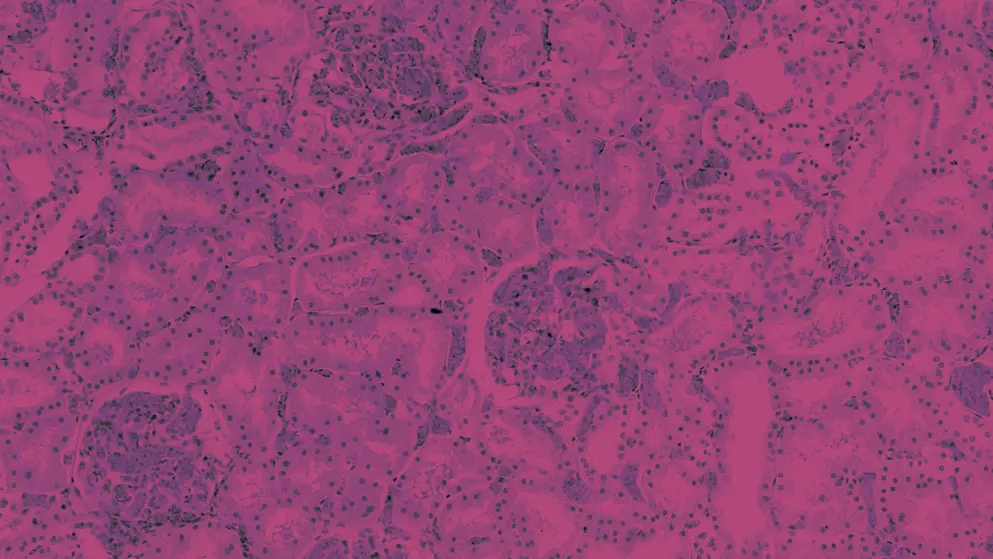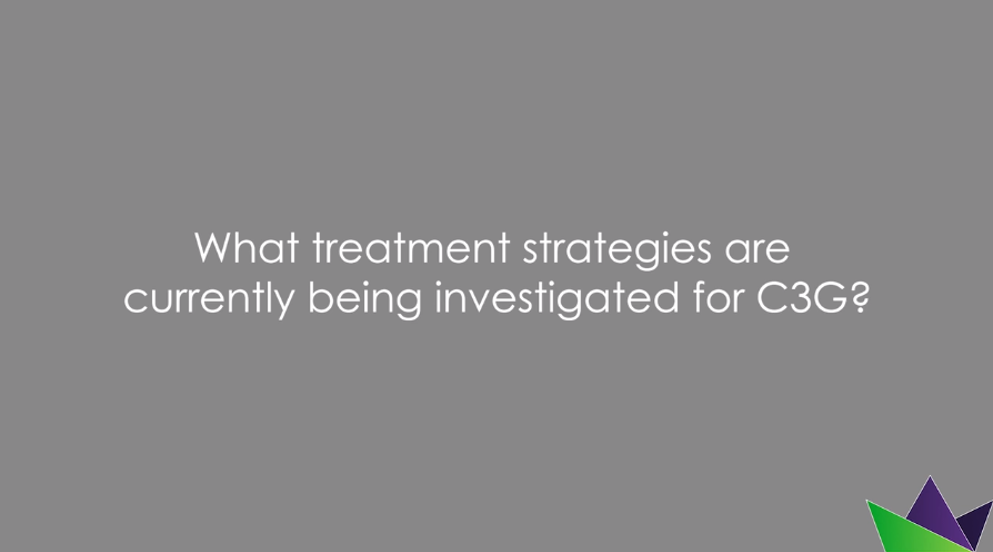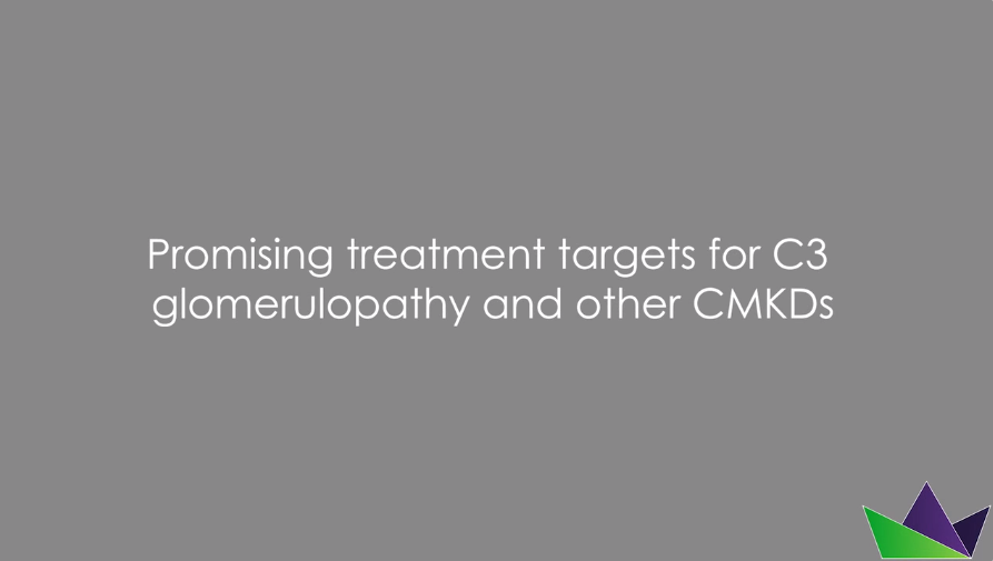
Expert opinion
Highlights from the WCN 2023 Congress: Spotlight on CMKDs
Explore our highlights from the International Society of Nephrology World Congress of Nephrology (WCN) 2023, which was held in Bangkok, Thailand, on 30 March to 2 April.
- Learn about the progress of complement inhibitors through clinical trials
- Discover key findings from real-world evidence on complement-mediated kidney diseases (CMKDs)
- Gain expert insights from Dr Edwin Wong on key highlights at the congress
Updates from clinical trials of complement inhibitors in CMKDs
Interim results from a phase 2 study of iptacopan in C3G
Dr Carla Nester (USA) and colleagues presented interim results of an open-label, non-randomised, multicentre extension study of iptacopan (LNP023) in patients with C3 glomerulopathy (C3G)1. Iptacopan is an oral, first-in-class proximal complement inhibitor that specifically binds Factor B and inhibits the alternative complement pathway.
These interim results reported the effects of 12 months of iptacopan treatment, including 3 months of treatment in the Phase 2 study (NCT03832114) plus 9 months of treatment in the extension study (NCT03955445). The interim analysis included 26 participants with either native C3G (cohort A) or recurrent C3G post-kidney transplant (cohort B). The composite primary efficacy endpoint was defined as stable/improved estimated glomerular filtration rate (eGFR; ≤10% from baseline), ≥50% reduction from baseline in urine protein-to-creatinine ratio (UPCR) and ≥50% increase from baseline in serum C3 after 12 months of treatment.
In this phase 2 study, results of the interim analysis demonstrated 8 of 15 (53%) patients with native C3G (cohort A) met all three criteria for the primary composite efficacy endpoint after 12 months of treatment with iptacopan1
Iptacopan was considered well-tolerated. Most adverse events (AEs) were of mild or moderate severity; a total of five participants experienced nine serious treatment-emergent AEs, and there was one death unrelated to iptacopan treatment. However, a greater proportion of AEs were moderate or severe in cohort B compared with cohort A, which may have been influenced by mandatory immunosuppressive background therapy. Iptacopan is being further evaluated in the phase 3 APPEAR-C3G trial (NCT04817618) in patients with C3G.
Other clinical trials of complement inhibitors in CMKDs
The rationale and design of clinical trials for various other complement inhibitors in CMKDs were also presented, as summarised below.
Table 1. Study design for clinical trials of complement inhibitors in CMKDs, presented at WCN 20232-6. C3G, C3 glomerulopathy; IC-MPGN, idiopathic immune complex-mediated membranoproliferative glomerulonephritis; IgAN, immunoglobulin A nephropathy; LN, lupus nephritis; PD, pharmacodynamics; PK, pharmacokinetics. *Trial status as listed on ClinicalTrials.gov on 07 August 2023.
| Trial* | Population | Objectives and treatment |
| Phase 2 | ||
| NCT05097989 (recruiting) | IgAN or proliferative LN | Efficacy, safety, PK and PD of vemircopan (ALXN2050; an oral, small-molecule complement factor D inhibitor) |
| NCT05268289 (recruiting) | Active LN | Efficacy and safety of iptacopan, in combination with standard-of-care with and without oral corticosteroids |
| NCT05517980 (not yet recruiting) | IgAN or C3G | Efficacy, safety, PK and PD of KP104 (a bifunctional inhibitor of the alternative and terminal complement pathways) |
| NCT04564339 (recruiting) | IgAN or LN | Efficacy, safety, PK, PD and immunogenicity ofravulizumab (a terminal complement pathway inhibitor) |
| Phase 3 | ||
| NCT05755386 (not yet recruiting) | IC-MPGN | Efficacy and safety of iptacopan |
With numerous complement inhibitors in clinical trials across types of CMKDs including IgAN, LN, C3G and IC-MPGN, further results are eagerly anticipated by the nephrology community
Real-world evidence in IgA nephropathy (IgAN)
Persistence of signs and symptoms in IgAN despite treatment
Dr Richard Lafayette (USA) and colleagues presented data on results of a real-world study on the signs and symptoms of IgAN in treated patients7. A total of 295 nephrologists across Europe, the US, China and Japan completed structured online record forms for 1,276 successive patients with IgAN. The median time on treatment ranged from 61–130 weeks, depending on region.
Despite treatment, IgAN signs and symptoms, including proteinuria, haematuria, hypertension and fatigue persisted in the majority of patients – in particular, proteinuria persisted in 36–66% of patients on treatment
The authors concluded that there is a need for better treatment options to control the signs and symptoms of IgAN, and enhance disease management for these patients.
Prognosis, dialysis and transplantation in patients with IgAN
Dr Dario Roccatello (Italy) and colleagues presented an analysis of patients with IgAN which investigated prognosis, and the need for dialysis and kidney transplantation over time8. Using the same survey programme and geographic context as Lafayette and colleagues, this analysis was based on records for 1,727 successive patients with IgAN, provided by 295 nephrologists.
Despite most patients receiving treatment, kidney function reportedly worsened by at least one CKD stage in 15% of patients, while 67% maintained the same CKD stage, over a median follow-up of 95 weeks. Approximately 50% of patients were expected to need dialysis in their lifetime, and 18% were considered eligible for kidney transplantation. The authors suggested that these data support an urgent need for early diagnosis and treatment to slow progression and prevent/delay dialysis and transplantation in patients with IgAN.
Diagnostic delays in IgAN and change in kidney function from first clinical sign
Dr Robert Perkins (USA) and colleagues presented results of a retrospective analysis on diagnostic delay and change in kidney function, based on electronic health record data from 117 patients with a biopsy-confirmed diagnosis of IgAN9. The overall median time to diagnosis was 5 months (interquartile range, 0.9–29.3).
A substantial proportion of patients with IgAN experienced a delay from first clinical sign to biopsy-confirmed diagnosis, during which kidney function (eGFR) was found to decrease – particularly among patients with a greater diagnostic delay
The authors suggested these findings warrant investigation into whether earlier detection of IgAN could help preserve kidney function and improve patient outcomes in IgAN.
Risk of kidney, cardiovascular and mortality outcomes in IgAN: The KNIGHT study
Dr Thida Tan (USA) and colleagues presented results of a retrospective US observational study, using a matched analysis to compare the risk of kidney, cardiovascular and mortality outcomes between patientswith biopsy-proven IgAN (n = 1,651), non-IgAN chronic kidney disease (CKD) (n = 9,863) and adults without CKD (n = 16,510)10. The results indicated adults with IgAN had:
- higher adjusted rates of adverse kidney outcomes, including end-stage kidney disease (ESKD) and worsening CKD, when compared with non-IgAN CKD
- higher rates of hospitalisation for heart failure, and death, compared with adults without CKD
Other developments in CMKDs
Characteristics and outcomes of IC-MPGN versus C3G
Dr Kati Kaartinen (Finland) and colleagues presented results of a single-centre, retrospective review of MPGN biopsies to investigate clinical characteristics, renal and overall survival in Finnish patients11. Of the 60 included biopsies, 37 were IC-MPGN and 23 were C3G. Between these groups, baseline characteristics, treatments at baseline and during follow-up were not considered different, and renal and overall survival were similar; however, statistical significance was not reported.
Overall, the authors considered IC-MPGN and C3G to have similar clinical characteristics, renal and overall survival, and suggested the current subdivision of MPGN may not add substantial clinical value when assessing renal prognosis
Association of renal biopsy C4d staining with clinical severity and short-term outcomes in lupus nephritis (LN)
N Amin (Bangladesh) and colleagues presented results of a prospective, single-centre observational study, in which renal biopsies from 45 Bangladeshi patients with LN were histologically evaluated for complement component C4d staining12. Higher C4d staining was associated with higher disease activity scores (SLE Disease Activity Index) at presentation and up to 6-month follow-up (p=0.0002 and 0.001, respectively). Along with arteriolar C4d deposition, higher C4d staining was also associated with more non-remissions and partial remissions (p=0.0001 and <0.0001, respectively).
Based on this small study, the authors suggested that including C4d staining on renal histopathology and activity index may assist in early recognition of severe LN and inform risk of developing severe disease and poor response to treatment.
Effect of iptacopan on proteinuria and complement biomarkers over time in IgAN
Professor Jonathan Barratt (UK) and colleagues presented results of an exploratory analysis on the effects of iptacopan versus placebo on proteinuria and biomarkers of complement activation after 3 or 6 months of treatment, using data from a phase 2 study (NCT03373461) of patients with IgAN (n = 51)13. Compared with placebo, treatment with iptacopan 200 mg twice daily was associated with:
- clinically meaningful changes in proteinuria after 3 and 6 months of treatment
- reductions in serum and urine C5b-9, a biomarker of alternative complement pathway activation to near the range observed for healthy volunteers, sustained for up to 6 months of treatment
Statistical significance was not reported in this small study. The authors noted they expect the magnitude of proteinuria reduction with iptacopan 200 mg to translate to a reduced risk of chronic kidney disease progression. Overall, these findings were considered consistent with iptacopan’s inhibitory mechanism of action on the alternative complement pathway.
Iptacopan will be further evaluated in the phase 3 APPLAUSE-IgAN trial (NT04578834) of patients with IgAN.
Key WCN 23 highlights with Dr Edwin Wong
Explore key highlights relating to complement-mediated kidney diseases (CMKDs) from WCN 2023 with Dr Edwin Wong, a consultant nephrologist from the UK. Abstracts from WCN23 referred to in these highlights can be accessed via links listed in the References section.
Progress of investigational IgAN treatments through clinical trials
In the video clips below, Dr Wong discusses interim data from the PROTECT study, a Phase 3 trial of an endothelin and angiotensin II receptor antagonist, sparsentan, in patients with IgA nephrophathy (IgAN). He also discusses the progress of other investigational treatments, such as complement inhibitors and monoclonal antibodies, as they progress through clinical trials in patients with IgAN3,13-16.
Clinical trial updates for investigational treatments in C3G and other CMKDs
Dr Wong summarises some key studies presented at WCN 2023 from clinical trials of investigational treatments such as iptacopan and pegcetacoplan in C3G, immune complex membranoproliferative glomerulonephritis (IC-MPGN) and IgAN.
Real-world evidence at WCN 2023
Dr Wong highlights the findings of a real-world, retrospective study which reported symptoms of IgAN across multiple countries, and notes some implications for endpoints in future clinical trials.
Summary and take-home messages from WCN 2023
Dr Wong provides a brief summary of his key highlights from WCN 2023, and how these studies may contribute to future treatments for CMKDs.
ASN 2022 congress highlights
Join Dr Carla Nester as she discusses numerous findings presented at the American Society of Nephrology (ASN) 2022 Congress, which was held in November in Orlando. Dr Nester provides a comprehensive overview of the presentations, which included data on new treatment targets, the latest findings on nephritic factors, and novel treatments for C3 glomerulopathy (C3G) and other complement-mediated kidney diseases (CMKDs).
Complement is known to play a role in several kidney diseases. Here, Dr Carla Nester, Director of Paediatric Nephrology, Dialysis and Transplantation at the Stead Family Children’s Hospital, University of Iowa, describes the emergence of complement inhibitors as a potential therapeutic approach for such diseases. She also discusses research into related conditions presented at the ASN 2022 Congress.
Related content from ASN 2022
- Md Dom et al. evaluated the associations of complement proteins and early diabetic kidney disease in type 1 diabetes
- Bruno et al. described the effects of complement activation in podocyte structure and function in membranous nephropathy
- Li et al. presented data showing a correlation between urine C5b-9 and the activity index and between the Ba level and the chronicity index in lupus nephritis
- Several proteomic studies depicted the role of complement in glomerulonephritis in general (from microdissection), with one study suggesting that this may be a way to differentiate between post-infectious glomerulonephritis and C3G; see poster by Palma et al. for more
- Tampe et al. presented the role of intrarenal synthesis of complement and how it may correlate with decline in kidney function in antineutrophil cytoplasmic antibody (ANCA)-associated renal vasculitis
Dr Nester continues by highlighting the primary drivers of disease in C3G, as well as the emergence of the alternative pathway (AP) of complement as a potential treatment target.
Dr Nester explains that convertase dysregulation (C3 or C5) is likely to be at the centre of C3G pathogenesis, which has informed the development of some newer therapeutics.
Here, Dr Nester discusses some of the latest findings on nephritic factors and their role in C3G, as presented at ASN 2022.
Related content from ASN 2022
Dr Nester discusses the future treatment landscape for CMKDs, and the potential role of complement pathway inhibitors.
Related content from ASN 2022
Here, Dr Nester highlights data presented at ASN 2022 on new treatments for C3 glomerulopathy and other CMKDs.
Related content from ASN 2022
- Rovin et al. presented phase 2 data for factor B inhibition with iptacopan in IgA nephropathy patients, demonstrating a 41% reduction in urine protein creatinine ratio after six months
- Nester et al. presented data from a 12-month interim analysis of a phase 2 study evaluating long-term efficacy, safety and tolerability of iptacopan in C3G, finding a 57% proteinuria reduction over baseline measures, and an increase in glomerular filtration rate (GFR) of 6.83ml/min/1.73m2 in their naive kidney disease patients
- Storrar et al. reported that narsoplimab stabilised eGFR and dramatically reduced urine protein in a single patient case study
- Cortazar et al. presented findings from a post-hoc analysis of avacopan in patients with estimated GFR (eGFR) near the threshold for dialysis (≤20 mL/min/1.73 m2); eGFR was more likely to increase in the avacopan group compared with controls , and to see a proportionally greater increase in more severe cases
- van Leeuwen et al. presented the safety and tolerability of early access avacopan for patients with ANCA-associated vasculitis
- Jayne et al. presented safety data across three large trials of avacopan vs prednisone in ANCA-associated vasculitis
Discover the key findings from presentations at ASN 2022, and how they might impact the management of CMKDs.
Here, Dr Nester notes that the role of complement in kidney diseases was a key feature of ASN 2022.
All opinions expressed in these videos are those of the invited faculty. This content should not be taken as medical advice and is for informational purposes only. Please consult your regional clinical practice guidelines for clinical practice recommendations in your area.
Unmet needs in C3G treatment
Dr Edwin Wong, an expert nephrologist from the UK, discusses the range of unmet needs for treatment of CMKDs, particularly C3G, including the need for more effective treatment options to improve prognosis for patients impacted by the disease.
Dr Carla Nester, an expert nephrologist from the US, explores the most challenging obstacles to treatment of CMKDs in children and adults. In particular, Dr Nester discusses the lack of targeted treatment and variable efficacy of non-specific treatments currently used for standard of care in CMKDs.
Investigational treatments in clinical development for C3G
What key treatment strategies are in development to address these unmet needs in the treatment of C3G? Listen to Dr Edwin Wong’s and Dr Carla Nester's insights into the latest research and treatment targets under investigation for C3G.
Disclaimer: All opinions expressed in these videos are those of the invited faculty. This content should not be taken as medical advice and is for informational purposes only. Please consult your regional clinical practice guidelines for clinical practice recommendations in your area.
Join our host, Dr Carla Nester, and expert guests as they discuss the unmet needs around the diagnosis and treatment of patients with complement-mediated kidney diseases, with a particular focus on C3 glomerulopathy (C3G).
These podcasts were developed by EPG Health, an IQVIA business, for Medthority, and are intended for healthcare professionals only. This content has been developed independently of the sponsor, Novartis Pharma AG
Podcast 1: Diagnosis of C3 glomerulopathy – current state and unmet needs
In the first episode of the complement-mediated kidney diseases podcast series, Dr Nester explores key challenges in the differential diagnosis of C3G with Dr Christoph Licht. Learn about the importance of renal biopsy, and key challenges in differentiating C3G from other glomerulopathies in clinical practice.
Podcast 2: C3 glomerulopathy treatment now and in the future – how can we address unmet needs?
In this podcast episode, Dr Nester and Dr Andrew Bomback discuss current strategies and key unmet needs in the treatment of C3G. Dr Bomback explores investigational approaches to target the underlying cause of disease pathophysiology, including complement inhibition, and the importance of patient access to clinical trials. Both experts then close the podcast with a discussion on wish list items that would help to address these needs and other treatment challenges in the future.
Learn more about the burden, diagnosis and treatment of C3G
Disclaimer: All opinions expressed in the ‘complement-mediated kidney diseases' podcast series are those of the invited faculty. This content should not be taken as medical advice and is for informational purposes only. Please consult your regional clinical practice guidelines for clinical practice recommendations in your area.
Learn more about the experts who were involved in this Learning Zone



